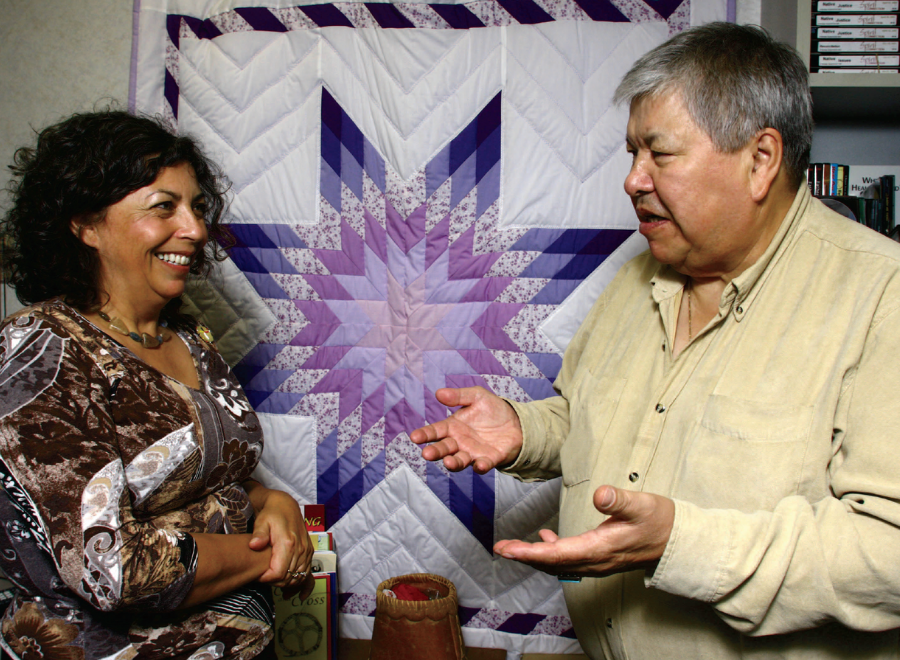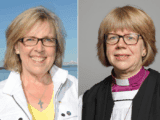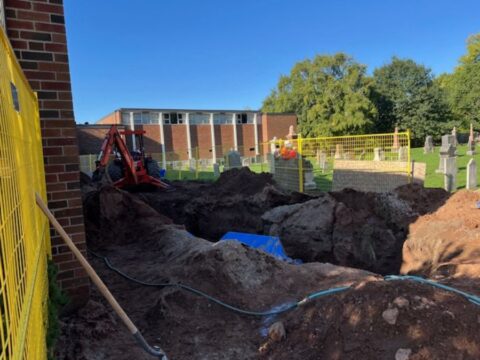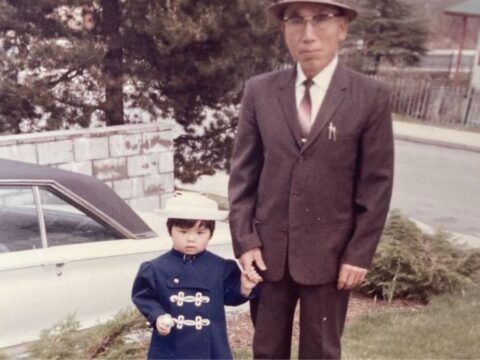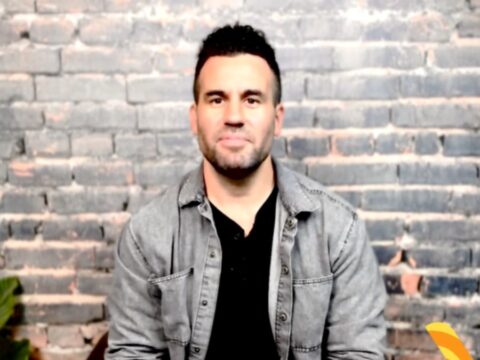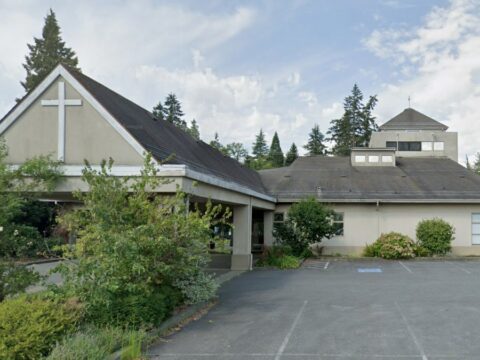Last September, at the third official gathering of the United Church’s Aboriginal Ministries Council, Susan Gabriel of Kanehsatake, Que., handed a snapshot around the meeting table. The picture, taken 30 years ago, showed her husband, Harvey Gabriel, with the late Rev. Johnston Garrioch of Cross Lake, Man., at a United Church national consultation on Native ministries. The consultations were the church’s first efforts at bringing together Indigenous congregations to hear their concerns. “After all these years,” said Gabriel after the meeting, held on the Chippewas of Nawash First Nation in Cape Croker, Ont., “voices that were marginalized are being heard at the top level of the church.”
The Aboriginal Ministries Council (AMC) and its General Council Office staff group — called the Aboriginal Ministries Circle — were created two years ago to give First Nations a greater voice within the church. The 2006 General Council laid the groundwork for the new unit, and the 2009 meeting formed two task groups (now merged into one) to look into changing the United Church crest and the Basis of Union to include Indigenous Peoples. While many particulars still need to be worked out, members of the AMC have high hopes that the new Council and support staff will help move the whole church toward better relationships with Indigenous Peoples.
You may unsubscribe from any of our newsletters at any time.
AMC staff co-ordinator Rev. Maggie McLeod, hired last January, says the Council is “in early development.” Three of its seven staff positions are not yet filled, but job descriptions have been approved for two full-time community capacity development workers, who will help Indigenous congregations strengthen their ministries. A youth ministry development staff person should also be in place by early next year. In addition to vetting job descriptions, planning a national spiritual gathering and hearing immediate concerns from across the church, the Council is fostering a sense of unity among Indigenous groups that had previously been working separately. It is also building a sense of trust for the church among Indigenous congregations.
First Nations people who have stuck with the United Church over the past three decades have already seen some steps in that direction. There was the Native Apology in 1986 and the election of the church’s first Indigenous moderator, Very Rev. Stan McKay, in 1992. The church has also apologized for its role in operating Indian residential schools, participated in legal settlements over abuses at the schools and committed to making right relations with First Nations people a top priority.
The Native ministry consultations of the early 1980s led to the formation of two distinct First Nations theological colleges, the Dr. Jessie Saulteaux Resource Centre in Beausejour, Man., and the Francis Sandy Theological Centre in Paris, Ont. The all-Native Keewatin Presbytery was formed in northern Manitoba and Ontario in 1981, and in 1988 three additional Presbyteries across Canada joined Keewatin to form the All-Native Circle Conference (ANCC). Some Native ministry congregations in Ontario, Quebec and British Columbia, however, chose to remain connected with their original Presbyteries and Conferences. This regrouping created unusual situations, such as neighbouring Mohawk congregations in the Montreal area respectively choosing Indigenous and non-Indigenous Conferences.
With the formation of the AMC, “we have for the first time in the United Church brought together all the various Nations and constituencies within the United Church, so that builds a lot of diversity,” says McLeod.
The Council includes representatives from the All-Native Circle Conference, Indigenous congregations in Quebec, Ontario and British Columbia Conferences, and Inuit and Métis communities. Indigenous Peoples with traditional beliefs are also on board, together with reps from the General Council Executive, the church’s intercultural ministries and the two First Nations theological schools. Collectively, members of the AMC speak at least six Indigenous languages.
“In our Aboriginal communities, we’re not all the same,” says Council member Lorna Pawis of the Wasauksing-Shawanaga pastoral charge near Parry Sound, Ont. “But our commonality is that our communities include all kinds of belief systems.” She hopes the Council will work to bridge intercultural gaps between Indigenous communities while also educating non-Indigenous church people about these differences. The AMC can help in that process, she says, “as long as we don’t get ourselves caught up and just become another arm of the church.”
As Pawis’s comment suggests, the AMC’s role in General Council staff and governance is still in flux. It may never be clearly drawn in any organizational chart. On one hand, the AMC is one of seven working units of General Council, with a $1.3-million budget and employees who ultimately answer to the general secretary. On the other hand, the AMC sees itself more as a partner to the mainstream church, with its own staff and a national Elder whose still-to-be-determined position may be seen to parallel that of the moderator. The AMC also has more weight on the General Council Executive than other working units, holding six of its 50 votes.
General Secretary Nora Sanders takes part in AMC meetings, not directing but listening and advising when she sees looming organizational pitfalls. “No one quite knows what the role of this group will be ultimately,” says Sanders, “but I think that it will be significant.”
Ray Jones of South Hazelton, B.C., who chairs the AMC, says he hopes it will become “fully embodied with the United Church. It was the plan 30 years ago and is finally starting to evolve.”
The far-flung group of volunteers who make up the new Council have to help it find its place in the wider United Church while also bringing forward concerns from their communities. Rev. John Thompson, an AMC member from Oxford House, Man., has “no doubt that [the Council] gives strength to the Native voice.” Still, he has “mixed feelings on the money side,” as General Council devotes $1.3 million a year in new funding to the AMC while cutting mission support to Indigenous congregations by 10 percent for 2011 to 2013. As chair of Keewatin Presbytery, he will have to prepare the pastoral charges in his region for $80,000 in cuts next year. Many Indigenous church buildings and manses (officially owned by the United Church) are already in disrepair, and some northern congregations continue to use condemned church buildings, says Thompson.
In another financially related dilemma, General Council has asked the Francis Sandy and Dr. Jessie Saulteaux centres to begin merger talks in an effort to cut costs. At a time when more First Nations ministers are desperately needed across the church — 21 of the church’s 54 Indigenous congregations are currently without called or appointed ministers — Ray Jones calls work on the merger “a Solomon’s task.”
More understanding is also needed in the non-Indigenous church. AMC member Lewis Coffman of Paisley, Ont., says people should know that First Nations churches serve communities as much as congregations. “Too many of our non-Aboriginal people think, ‘They’ve only got five people in church on Sunday, so what’s the point?’” He is hopeful that the AMC and its churches will expand connections between Indigenous and non-Indigenous congregations.
Part of that connection may mean speaking up with First Nations on issues of concern, such as racism in non-Indigenous communities. Heads nodded in recognition at the Cape Croker gathering as chiefs from the Saugeen Ojibwa Nation described the attitudes that led people to question Indigenous treaty rights. Pipelines are another hot topic.
Indigenous groups are concerned about environmental damage from planned northern British Columbia oil pipelines and will likely seek church support in challenging proposals.
On paper, the Aboriginal Ministries Council is part of the General Council structure. But at a deeper level, it’s a relationship that is changing and growing. McLeod hopes the AMC “will bring gifts to the whole church in terms of identity, who we are and what God is calling us to do.”
***
This story first appeared in The United Church Observer’s December 2010 issue with the title “A work in progress.”

